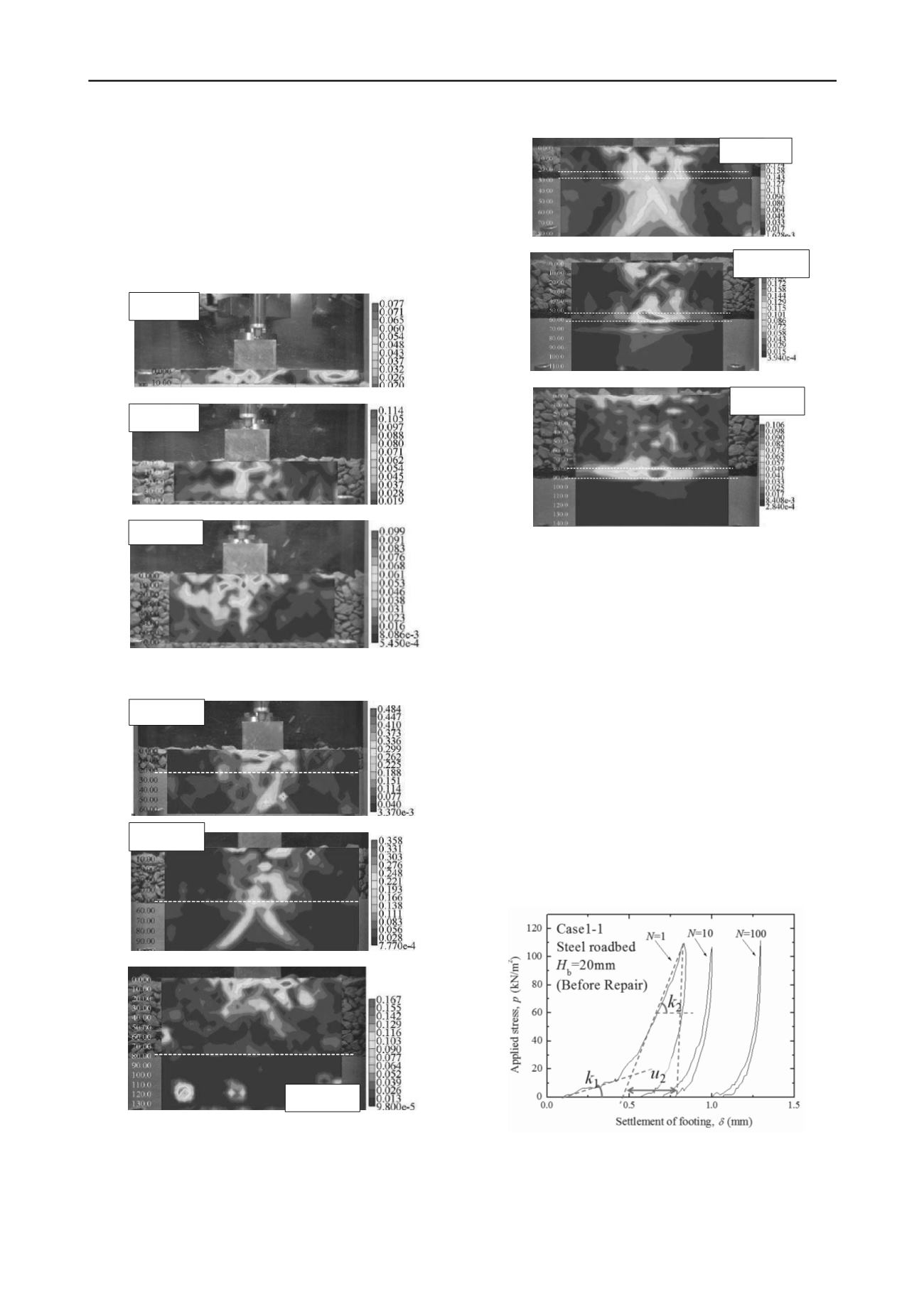
1277
Technical Committee 202 /
Comité technique 202
roadbeds, which can be explained by the limited distribution of
stress applied by the footing with a width of 48 mm.
Except for the cases in which
H
b
= 80 mm, residual settling
of the footing was attributed to total compression of crushed
stones and roadbed materials. In general, stress concentration in
roadbeds should be higher in the
H
b
= 20 mm cases than those
in the
H
b
= 50 mm cases. Therefore, owing to the plastic
deformation of roadbeds, the highest
value was observed in
Case 4, in which
H
b
= 20 mm, as shown in Fig. 4.
Figure 5. Distribution of maximum shear strain generated before tie-
tamper implementation (Case 1)
Figure 6. Distribution of maximum shear strain generated before tie-
tamper implementation (Case 2)
Case3-1
Case3-2
Case1-1
Case3-3
Case1-2
Case1-3
Figure 7. Distribution of maximum shear strain generated before tie-
tamper implementation (Case 3)
Conversely, the compression of crushed stones was higher in
the
H
b
= 50 mm cases than those in the
H
b
= 20 mm cases. If
nonlinear compression of roadbeds is relatively moderate, the
deformation modulus of the roadbeds changes slightly through
the change in stress levels. In this situation,
can be higher in
the
H
b
= 50 mm cases compared to that when
H
b
= 20 mm.
3.2 Effects of tie-tamper implementation
Case2-1
Figure 8 shows typical relationships between footing settlement
and applied stress, represented by convex curves, in Case 1-1
when the 1
st
, 10
th
, and 100
th
cyclic loadings were applied before
tie-tamper implementation. In this research, the curves were
fitted by bilinear lines, and the slopes of the two lines were
estimated as
k
1
and
k
2
. Displacement
u
2
was estimated by
dividing the applied stress by
k
2
. The parameter
u
2
decreased
and tended to show a constant value in each case with an
increase in the number of cyclic loadings (Fig. 9). Therefore,
these constant values will be used in the following discussion.
Case2-2
Case2-3
Figure 8. Relationships between footing settlement and applied
stress in Case 1-1 before tie-tamper implementation


